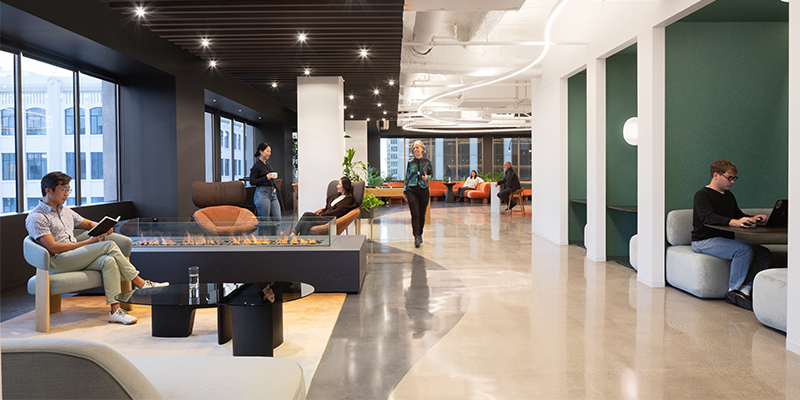As vaccinations become increasingly common and available across the U.S., more companies are starting to return to the workplace. However, after a year or more of working at home, many employees have found that their priorities have begun to shift in terms of what they expect and desire from their employers. As employees and employers alike adjust to the new normal, a number of commonplace workplace policies and perks will shift to meet changing needs and expectations. Here are six perks in particular that employees will actually want post-COVID.
Work-From-Home Allowances
The number of Americans working from home increased dramatically during the coronavirus pandemic. One Pew Research study found that 71% of Americans were working from home in October 2020.
Due to the sudden shift to remote working, many of these workers had to foot the bill for their requisite work-from-home expenses. The costs of utilities and additional equipment necessary for employees to work productively have all increased employee out-of-pocket expenses.
Meanwhile, the distributed work model has saved overhead expenses for many companies, especially in major metropolises like NYC, where office expenses are very costly. For this model to continue equitably, employees are beginning to lobby for compensation for these work-related expenses they have been personally funding, including increased use of electricity and air conditioning, ergonomic furniture, monitors, printers and miscellaneous office supplies. The solution may be in a tax deduction for remote employees or remote work stipends from employers.
Flexible Work Schedules
A November 2020 study conducted by JLL found that nearly three-quarters of employees expect flexible working post-COVID. Additionally, this study showed that a larger percentage of workers prioritized work-life balance over a high salary. This is a clear indication that employee expectations around workplace flexibility are shifting, and that employers wanting to stay ahead of the curve will adapt.
Flexibility doesn’t necessarily mean giving employees the option to work from home forever. Not everyone has an ideal and quiet workstation at home that’s free from distractions, for example. Instead, employers will be expected to implement hybrid return-to-work policies, giving employees the option to work from both the office and from home based on their productivity and needs. This can also mean allowing employees to have flexible work hours. Such a setup is ideal for working parents, for example, who have to balance their childrens’ schedules with work. Overall, allowing employees to work how and where they work best and empowering them to pursue balance will help avoid burnout and improve productivity and satisfaction.
Mental Health Perks
Working from home has also shown us how hard it can be to maintain the boundary between our work duties and personal life matters, especially when it comes to parenting or sharing a house with family members or roommates.
A recent study from Oracle and Workplace Intelligence reported that many people found 2020 to be the most stressful year in their professional careers. Without appropriate intervention programs available through the workplace, the effect of these issues on an employee’s mental health and well-being can directly affect their job performance and satisfaction levels. As a result, corporations are placing more emphasis on employee wellness.
Allowing additional leave credits, improving health insurance coverage for mental health concerns, and implementing employee wellness and support programs would be significant ways to address this issue.
More Transit-related Options (Uber Credits, Discounted Parking, Commuting Costs)
The remote work arrangement will not work for all types of businesses. Eventually, many companies will require a return to the office; however, employees might be hesitant to shoulder commuting costs after more than a year of working from home. Additionally, many employees have become wary of public transit and desire alternative commute options that won’t break the bank.
According to Edenred, companies should consider taking advantage of a commuter benefits pre-tax program allowing employees to set aside up to $270 per month to spend on mass transit, qualified paid parking or rideshares. Through this program, the company also benefits, saving about $40 per month in payroll taxes for each participating employee.
If possible, companies may also consider offering monthly travel stipends to empower employees to get to work comfortably.
Flexible Childcare Benefits/Support
One perk of working from home? Employees can spend more quality time with their children and focus more on family life. It’s not surprising, then, that employees who are parents desire more childcare options and benefits in a return-to-work scenario after a year of being primarily at home.
SHRM reports that the issue of child care has an especially tremendous impact on female employees’ ability to return to the workplace post-pandemic. A Bright Horizons survey led the organization to advocate for on-site daycare centers, explaining that “employers eliminate a significant source of worry, stress, and distraction, and as a result benefit from engaged and committed employees who are willing and able to put in their best performances.”
Providing such solutions can prevent a company’s staff from missing work and from experiencing dissatisfaction. A child-friendly workplace can also do wonders for the company’s brand and image. Creating an environment that allows employees to fulfill both their work and family obligations is a great way to attract and retain good employees.
Retirement Planning
Employers should not overlook senior workers when drafting a benefit plan for the business’ overall workforce. Not everyone is knowledgeable about the benefits they can receive from the Social Security system after filing for retirement. Therefore, firms should work closely with their retiring staff and help them understand how they can secure their financial future. Witnessing and being a part of the most recent pandemic presumably put everyone on their toes, worrying about their future. Businesses are not exempt, and most are still unaware of how they can effectively handle their workers’ expectations post-COVID. By considering appropriate measures and creating action plans to address these issues, companies can set themselves up for success when it comes to employee retention, productivity and engagement.








